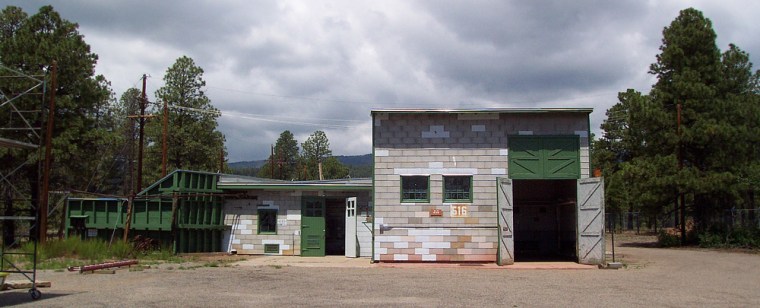Even as a secret community that gave birth to the atomic bomb morphed into a bustling government-lab town, many of its most historic sites remained tucked away from view.
But preservationists have gone behind the security fences to preserve for the first time a structure in which the Manhattan Project scientists did their work at Los Alamos National Laboratory. They contend the building is as significant as George Washington's home or a Civil War battlefield.
This weekend, a series of events will mark the restoration of a wooden, garage-like building where the world's first plutonium bombs were assembled.
Cynthia Kelly is president of Washington, D.C.-based Atomic Heritage Foundation, which is leading a drive to preserve key atomic-age sites at Los Alamos; Oak Ridge, Tenn.; and Hanford, Wash.
"It doesn't look like much," she said. "It's what happened there. It takes you back in time."
The simple structure is a reminder of the urgency with which scientists gathered in New Mexico in 1943 to design and assemble the first atomic weapons. There was no futuristic laboratory or sophisticated equipment on the mesa top where the federal government took over a boys' ranch school.
"It was seat-of-the-pants. They were jury-rigging stuff with masking tape," Kelly said.
The newly restored "high bay" building was part of V Site, a collection of wooden, shed-type structures slated for demolition in a cleanup of the laboratory until preservationists jumped in. In 2000, the Cerro Grande fire swept through, destroying all but the high bay building.
McAllister Hull, then a 21-year-old Army sergeant, recalled working in a casting building at V Site.
He said his job was to supervise crews casting the explosive lenses that would direct pressure inward to compress a plutonium core in "the gadget," as the prototype of the "Fat Man" bomb was called.
"We actually used a candy kettle ... to melt the explosives and then poured them into the mold to make the lenses," said Hull, a former physics professor at Yale University and the University of New Mexico.
The "gadget" was put together — minus the plutonium — at the "high bay" building.
In July 1945, the bomb was fully assembled and detonated at the Trinity Site, 200 miles to the south. Less than a month later, a similar bomb was dropped on the Japanese city of Nagasaki, three days after the uranium-based "Little Boy" bomb was dropped on Hiroshima.
The "high bay" building, which Kelly said cost about $1 million to restore, is still behind security fences. Kelly said although the building is inaccessible to the public, she hopes that will change.
Weekend events include bus tours, a reception and dinner, and a symposium featuring writers and artists. Among them: author Richard Rhodes, who wrote "The Making of the Atomic Bomb," and Jon Else, producer of the documentary film, "The Day After Trinity."
Anti-nuclear activist Greg Mello, who heads the Los Alamos Study Group, said he objects to the celebratory aura surrounding the events.
He said the events should have a "tone of grief and remorse" since they commemorate work that led to the bombing of the Japanese cities.
"The legacy is fear and ... enormous national efforts devoted to weapons of mass destruction, and we're still struggling with that today," he said.
Funding for restoration of the "high bay" building came from the federal government, $700,000 of it through the "Save America's Treasures" program. Several other sites at Los Alamos also are slated for preservation.
